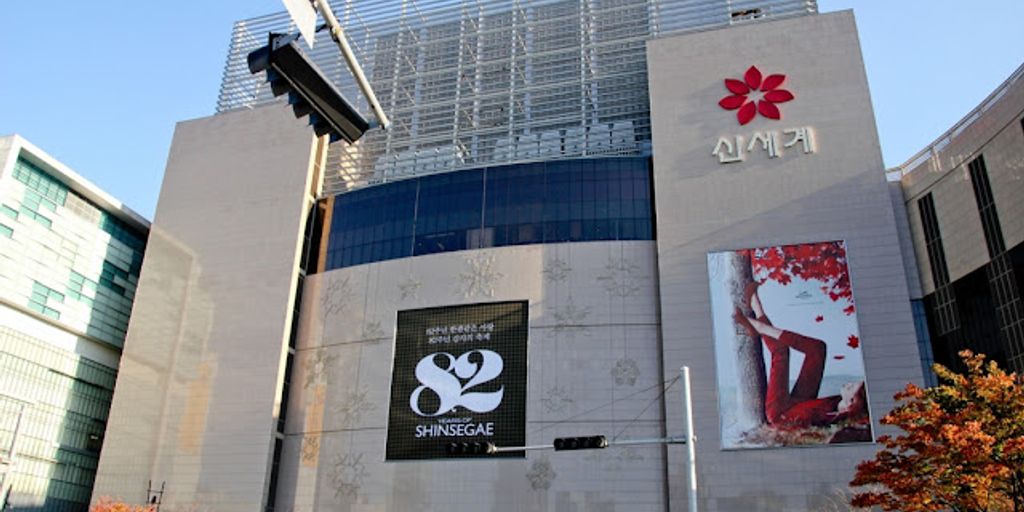
Busan, South Korea’s second-largest city, offers a comprehensive public transportation system that makes getting around the city both convenient and affordable. Whether you’re taking the subway, bus, taxi, light rail, or even a ferry, this guide provides all the information you need for a smooth journey. From using the Cashbee card to tips for first-time riders, we’ve got you covered.
Key Takeaways
- Busan’s public transportation system includes 4 subway lines, 1 light rail line, and an extensive network of buses.
- The reloadable ‘Cashbee’ card is highly recommended for convenient travel across all public transport options.
- Street signs and subway signs in Busan are generally written in both English and Korean, making navigation easier for foreigners.
- Taxis are readily available and can be hailed on the street or booked via apps, with fare information and payment options clearly outlined.
- Cycling, walking tours, and ferry services offer unique ways to explore the city, each with its own set of tips and guidelines for a safe and enjoyable experience.
Navigating the Busan Subway
The Busan subway is one of the best ways to get around the city. It has 5 main lines: Lines 1 to 4 and the Donghae Line. These trains run all day, making it easy for both locals and tourists to plan their trips.
Subway Lines Overview
The Busan subway system includes five main lines. Each line has its own color and number, making it simple to follow. Download a map of the Busan Metro before your trip to help you navigate.
Using the Cashbee Card
To make your travel easier, get a Cashbee card. You can buy and top up this card at any convenience store. When you’re done with your trip, you can get a refund for any leftover balance.
Tips for First-Time Riders
- Always stand on the right side of the escalator.
- Let people exit the train before you get on.
- Keep your voice down while on the train.
For a convenient stay, consider booking at the Kimchee Guesthouse Busan, which offers affordable and comfortable accommodation in downtown Busan.
Getting Around by Bus
Understanding Bus Routes
In Busan, buses come in different colors and sizes. Smaller green or blue buses only travel in their home neighborhoods, while larger buses travel longer distances throughout the city. Major bus stops will have an electronic board showing which routes pass through the stop and when the next bus will arrive. Bus drivers generally don’t speak English, so it’s a good idea to know your route beforehand.
Bus Fare and Payment Options
You can pay for your bus ride using a T-money card or cash. When you get on the bus, tap your T-money card or pay the fare in cash. Remember to tap your card again when you get off the bus. Here’s a quick look at the steps:
- Determine the bus station and the number of the bus you need to take.
- Prepare your money card and tap it when entering the bus.
- Watch for your stop and press the red stop button when nearing your station.
- Tap your money card and exit through the back door.
Tips for a Smooth Bus Ride
- Look at the bus route and plan ahead, especially if the buses are crowded.
- Once you’re on the bus, push the button to let the driver know you want to get off.
- Always exit the buses through the back door.
- Recorded messages announce the next stop, so listen carefully.
Busan’s bus system is a great way to explore the city, blending tradition and innovation for memorable adventures. Just remember to plan your route and have your fare ready!
Exploring Busan by Taxi
How to Hail a Taxi
In Busan, you can easily hail a taxi from the street or use the Kakao Taxi app. Grey taxis are the most common, but you might also see black deluxe taxis, which are more luxurious and cost more. It’s a good idea to have your destination written in Korean to show the driver.
Taxi Fare and Payment
All taxis in Busan use meters. The starting fare for regular taxis is 3,300 won for the first two kilometers, with 100 won added for each additional 133 meters. Deluxe taxis start at 5,000 won for the first three kilometers. There is a 20% surcharge for rides between midnight and 4 a.m. and a 30-40% surcharge for trips outside Busan city limits. You can pay with cash, credit card, or a T-money card.
Safety Tips for Taxi Riders
- Make sure the meter is turned on when you board.
- Tipping is not customary in Korea.
- If you’re traveling late at night, be aware of the surcharge.
Taxis are a convenient way to get around downtown Busan, especially if you’re carrying luggage or traveling in a group.
Using the Light Rail
Light Rail Routes
The Busan-Gimhae Light Rail Transit (BGL) is a convenient way to travel between Busan and Gimhae. It connects several key areas, making it easy to get around. It’s a great option for both locals and tourists.
Buying Tickets
Purchasing tickets for the light rail is simple. You can buy them at ticket machines located at each station. These machines accept both cash and cards. For frequent travelers, using a Cashbee card can save time and money.
Accessibility Features
The light rail is designed to be accessible for everyone. Stations and trains are equipped with ramps, elevators, and designated seating areas for those who need them. This ensures a comfortable journey for all passengers.
The light rail is a fantastic way to explore Busan and Gimhae, offering a smooth and efficient travel experience.
Cycling Around Busan
Bike Rental Services
Busan offers a variety of bike rental services that are both convenient and affordable. You can rent bicycles for a maximum of two hours and return them to one of the 11 shops scattered throughout the city. The city also provides free public bike rentals and repairs at various locations. Just remember to bring your passport or ID card if you’re a foreigner.
Popular Cycling Routes
While Busan is not the most bike-friendly city, there are some dedicated bike lanes, especially in the Haeundae district. These lanes are relatively safe and perfect for a leisurely ride. However, be prepared for the city’s hilly nature, which might require a bit of effort.
Safety Tips for Cyclists
- Always cycle on the shoulder of the road to avoid pedestrians, mopeds, and parked cars.
- Wear a helmet for safety.
- Follow traffic rules and signals.
- Be cautious of the driving style in Korea, which can be unpredictable.
Cycling in Busan can be a fun and free way to explore the city, but always stay alert and prioritize safety.
Ferry Services in Busan
Popular Ferry Routes
A few ferry lines run between South Korea and Japan, mainly between Busan and Fukuoka. The Busan Ferry Terminal is conveniently located just a 10-minute walk from Busan Station. Rates, departure times, and sailing lengths vary depending on the destination and time of year.
Buying Ferry Tickets
You can compare Busan to Hakata (Fukuoka) ferry times, prices, and book ferry tickets online to save on your trip. It’s a good idea to book in advance, especially during peak travel seasons.
Tips for a Comfortable Ferry Ride
- Arrive at the terminal at least 30 minutes before departure.
- Bring snacks and water for the journey.
- Dress in layers as it can get chilly on the ferry.
Ferries are a great way to travel between Busan and Japan, offering a scenic and relaxing journey across the sea.
Walking Tours and Pedestrian Paths
Popular Walking Tours
Busan offers some amazing walking tours that let you explore the city’s top attractions. Embark on a walking tour of Busan to see the best sights in just a few hours. Some popular tours include visits to Gamcheon Culture Village, Jagalchi Fish Market, and Haeundae Beach.
Pedestrian-Friendly Areas
Busan is a very walkable city with many pedestrian-friendly areas. Nampo-dong and Seomyeon are great places to stroll around, shop, and enjoy local food. The city also has beautiful parks like Yongdusan Park and Igidae Park, perfect for a relaxing walk.
Safety Tips for Walkers
- Always use crosswalks and follow traffic signals.
- Be aware of your surroundings, especially in crowded areas.
- Carry a map or use a GPS app to avoid getting lost.
- Wear comfortable shoes and stay hydrated.
Walking is one of the cheapest and healthiest ways to explore Busan. Enjoy the scenic views and discover hidden gems along the way.
Conclusion
So, there you have it – a complete guide to navigating Busan’s public transportation system. Whether you’re hopping on the subway, catching a bus, or using the light rail, getting around this vibrant city is a breeze. Don’t forget to grab a Cashbee card to make your travels even smoother. With English and Korean signage, and convenient options at every turn, exploring Busan has never been easier. Enjoy your trip and happy travels!
Frequently Asked Questions
What is the best way to pay for public transportation in Busan?
The best way to pay for public transportation in Busan is by using a reloadable ‘Cashbee’ card. You can top it up at any convenience store and use it for subways, buses, and even some taxis.
How many subway lines are there in Busan?
Busan has 4 subway lines and 1 light rail line that connect various parts of the city.
Can I get a refund for my Cashbee card balance?
Yes, any remaining balance on your Cashbee card can be refunded when you leave the city. However, the cost of the card itself is non-refundable.
Are public transportation signs in Busan available in English?
Yes, most street signs and subway signs in Busan are written in both English and Korean, making it easier for tourists to navigate.
Is it easy to hail a taxi in Busan?
Yes, hailing a taxi in Busan is relatively easy. You can either flag one down on the street or find a taxi stand near popular areas and transportation hubs.
Are there any special tips for first-time riders on Busan’s public transportation?
Download a map of the Busan Metro before your trip and familiarize yourself with the routes. For buses, each stop has a screen displaying the bus numbers and the minutes until the next bus arrives, with information generally available in both English and Korean.






No comment yet, add your voice below!